The second day in Glen Strae was off dirt roads. They ended and were replaced by single-file paths that were sometimes visible and sometimes only imagined. It’s hard to know whether these were first made by animals or people.
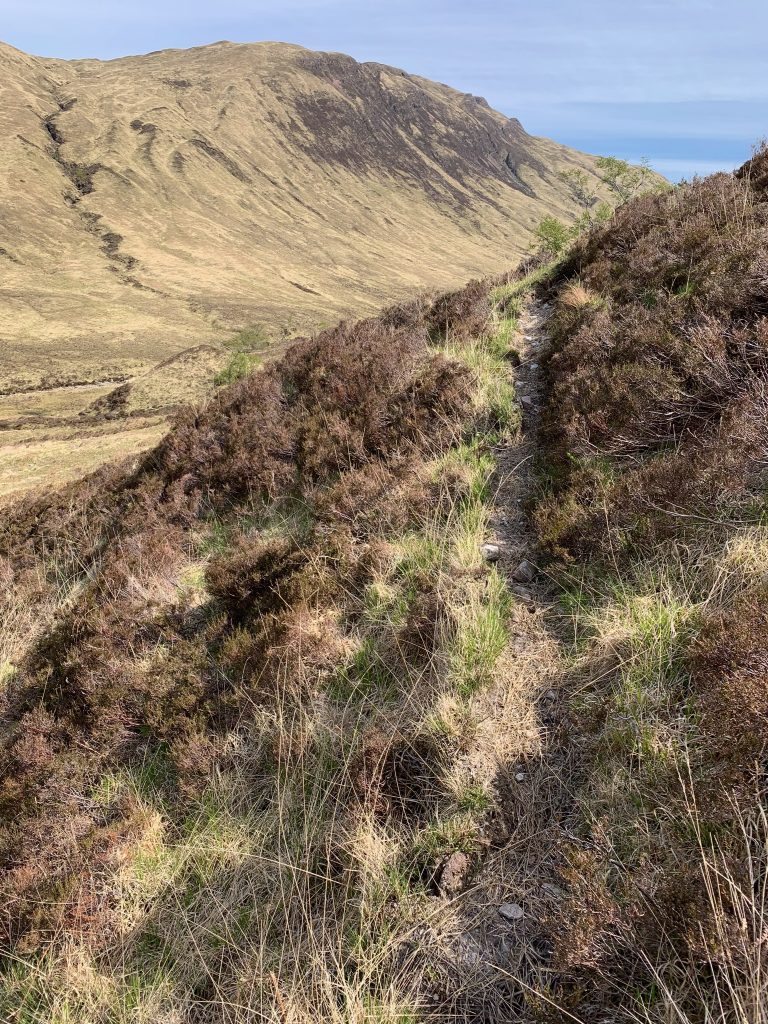
Despite a mini-drought in the Highlands, the ground is soft, mossy, and wet. The break it gives to the feet is compensated for by the effort require to climb in it.
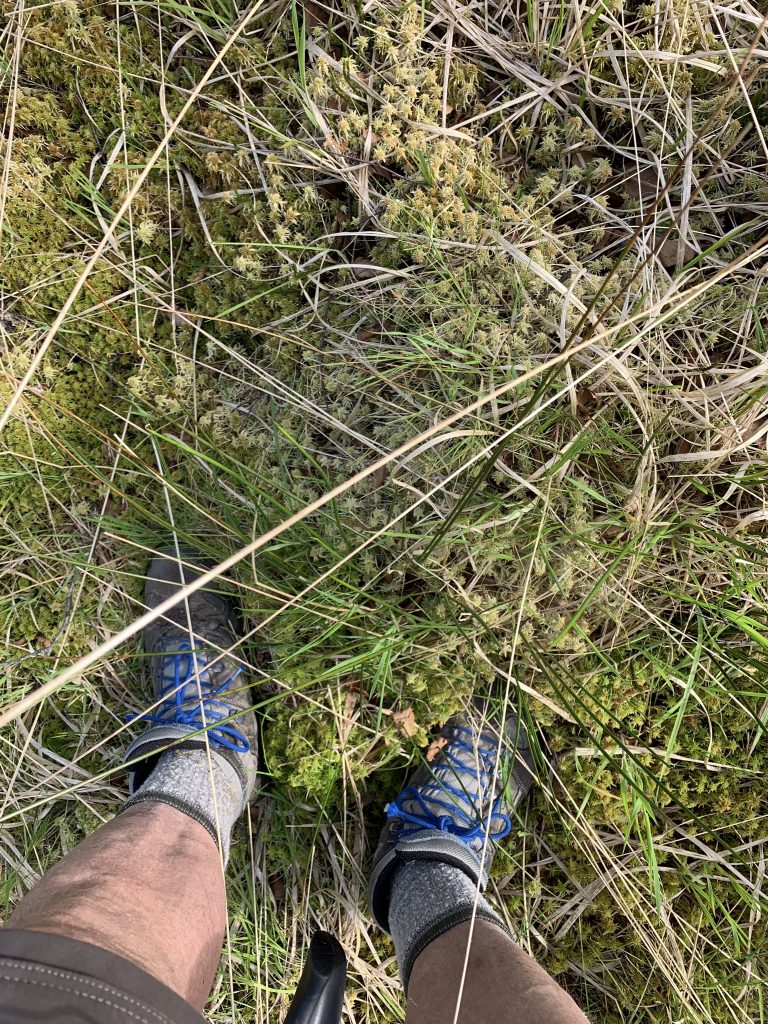
If you’re trying to reduce the amount of unnecessary climbing (as I am), there’s a great temptation to stay high in the glens—either by walking along the tops (which of course require getting up there) or by staying halfway up the slopes, banking into the turns.

When you do the latter, however, your downhill foot is constantly supinating—ankle bending outward—and if the slope is steep, real care must be taken. Trekking poles are essential.
After many days I’ve concluded that it’s better to take neither of the strategies just described. Instead, it’s best to go low and walk on the flat.
At the end of Glen Strae I abandoned my planned route—in red in the map below—to avoid walking up or across a steep hillside. Instead, I followed the stream (Allt Coire Bhiocair) that runs through the forest.


I went down the stream until I hit a small tributary that (I knew from the map) upstream crossed a double-dotted line on the map–an easily walked path. So, I went up that tributary until I hit it.
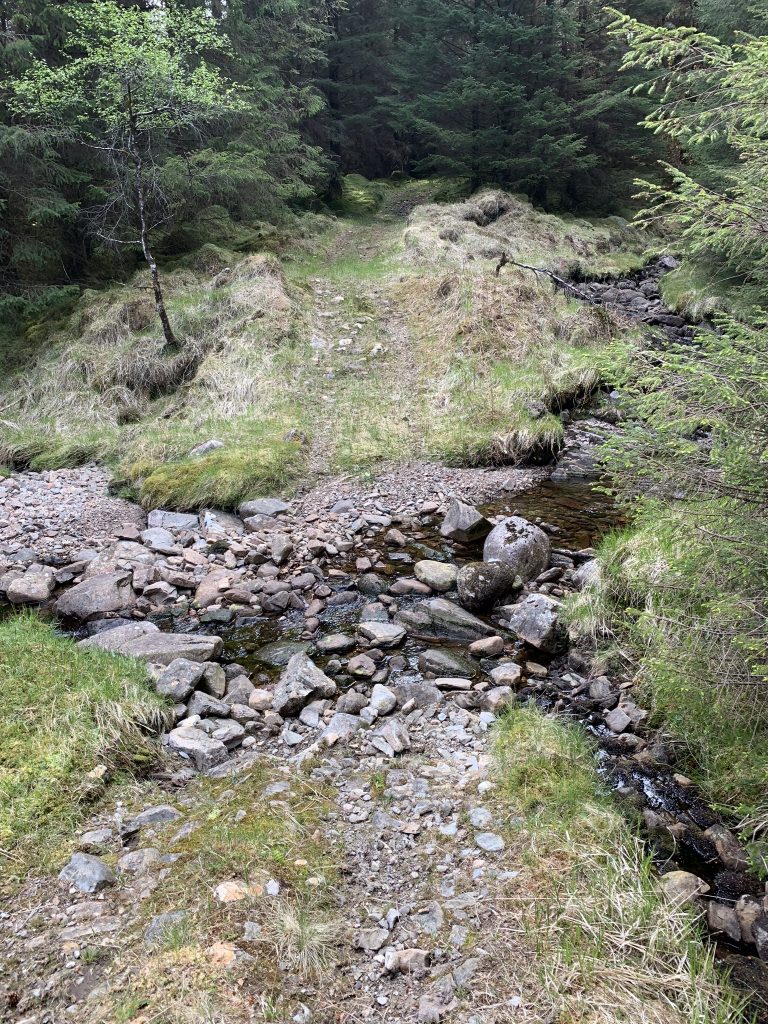
As I walked down the path, I passed a pile of newly cut logs. The old forests in Scotland are gone, but there are many tree plantations and commercial timber operations.
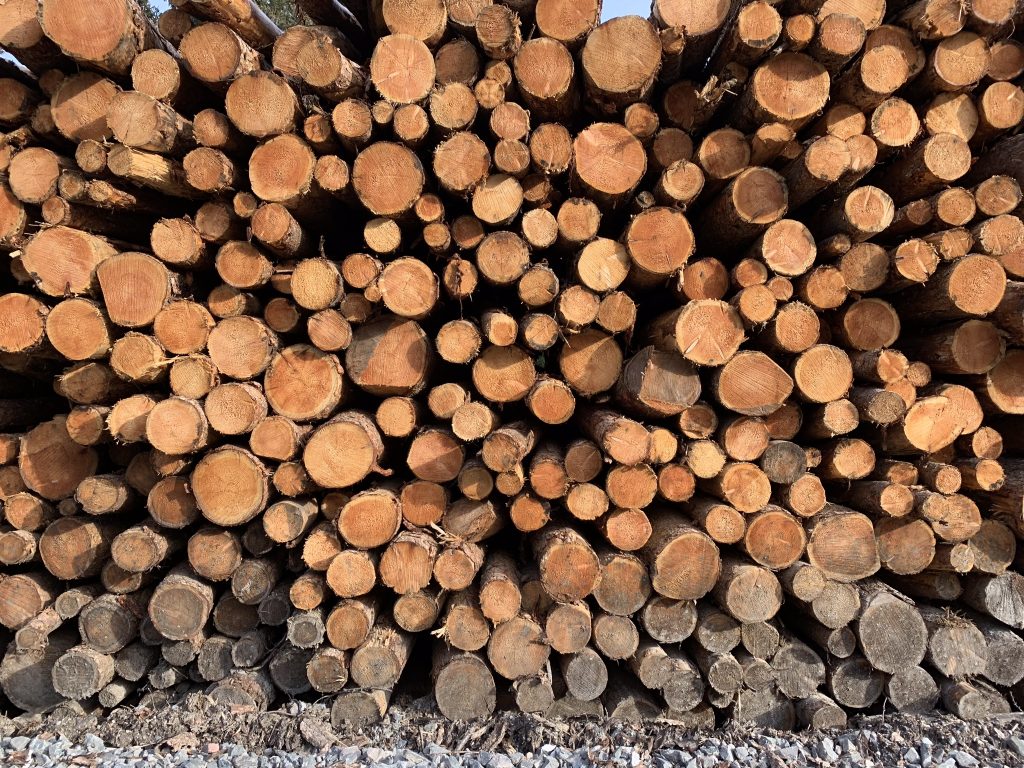
I arrived at my destination, the Bridge of Orchy, about 7 o’clock. The West Highland Way goes right through the village, which consists of a hotel with a restaurant, a volunteer fire department and a community center (both locked), and a train stop at which the old station house is a hostel.
There isn’t a public bathroom in the village, even though in good weather there’s a steady flow of people off the train or out of cars, heading to the West Highland Way. Thankfully, the hotel lets people use the bathroom for a couple of pounds put into the charity jar at the bar.
As I emerged from the forest path I ran smack into a flat area next to the Way that was the ground for “wild camping,” as they call tent camping here. There weren’t any flat areas, but there was, as always, someplace to put a tent.
I was next to a tent occupied by two Germans, Lutz and Robert, who are engineers at Stryker, the medical device and hospital supply company. They work in a branch in Kiel, near the Danish border. They were taking a break after finishing a difficult project.
I was familiar with Stryker, and associate it with operating room equipment.
“Is Stryker a German company?” I asked them.
“No. It’s headquarters is in Kalamazoo, Michigan. It was started by a man named Stryker, a doctor, after the war,” Lutz said.
“There are something like 35,000 people in the company around the world,” Robert said. “Our marketing people tell us that the operations in Europe pay for themselves with sales in Europe. But the profits come from America.”
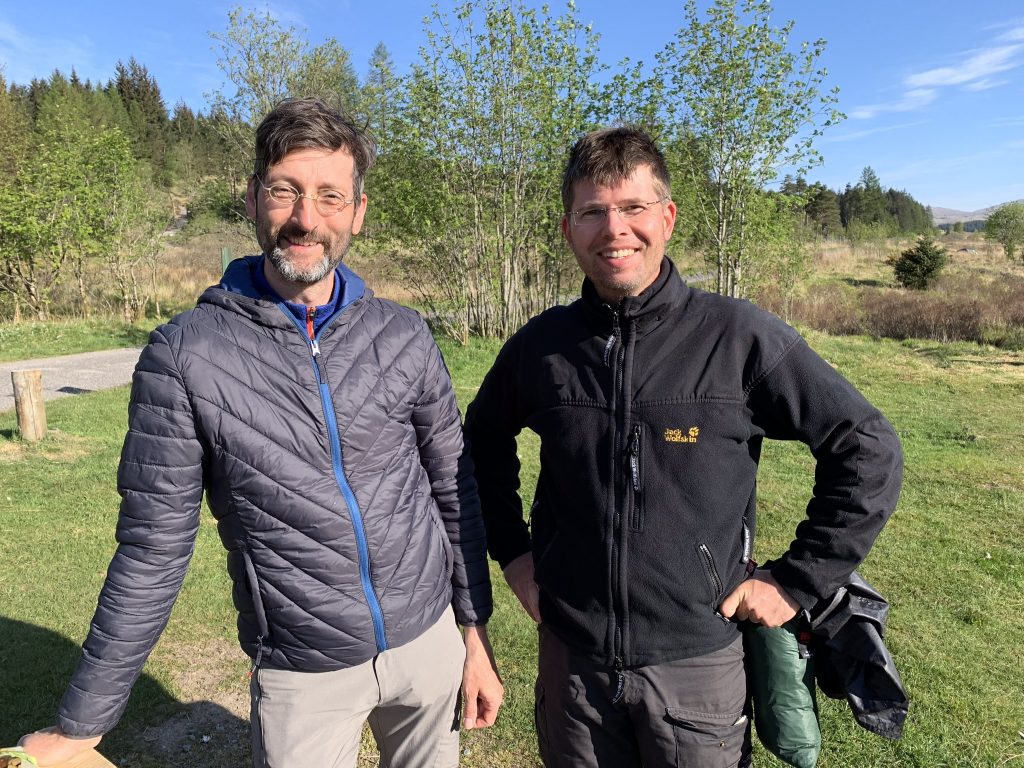
This is no surprise. When it comes to medical spending, the United States is where the rubber meets the sky.
you’re getting better and better at this. Great pics and great lyrics. I guess your feet must be better. b
And no rain yet? Amazing to be there during a mini drought.